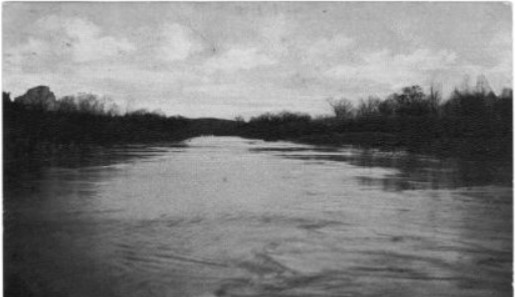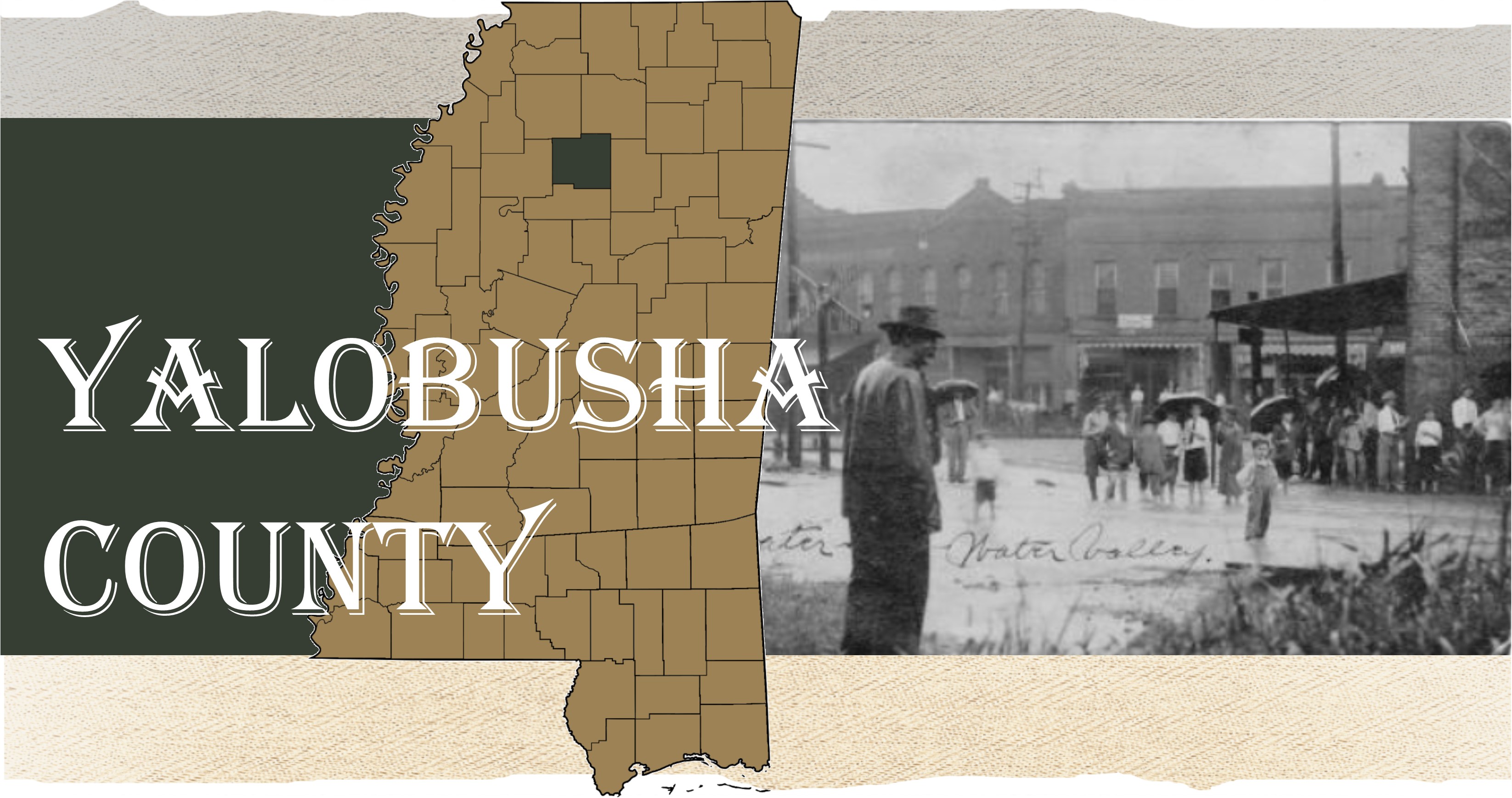The Yellow Fever Epidemic of 1878
by Dr. H.A. Gant, M.D.
This terrible plague struck the mid-south area in the late summer of 1878. The city of Memphis was the most severely
stricken community in the south suffering over 5,000 casualties in the period from August to November. Grenada and Holly
Springs were both devastated by the fever with over 300 deaths in each town and many hundreds contracting the disease. In
Grenada the attack was so deadly that 250 died before the first patient recovered from the malady. Many theories were advanced
but no one knew what caused the disease or how it was transmitted. This lack of knowledge about the fever or how to properly
treat it produced terror when it was announced that a case had been diagnosed in a community. Experience with the disease in
cities like New Orleans, Mobile and Galveston, where epidemics occurred every few years, showed that some measure of safety
could be found by fleeing to rural areas or moving quickly to more northern states.
The first case in Yalobusha County was in Water Valley where a railroad engineer named Kenny Lees was taken with a severe
fever. Dr. Stone of New Orleans was rushed to the case and confirmed the fear of the local doctors that it was Yellow Fever.
This occurred n the early part of August 1878. Great excitement and panic seized the town and the county generally.
From Water Valley people began evacuating at once, leaving town in greatest terror and confusion. Many left town by train as
soon as possible for they knew a quarantine would be immediately enforced by all nearby towns. All the trains on the Illinois
Central from the south were discontinued, except through passenger trains carrying U.S. mail, and these were required to stop a
mile south of town, at the Sel Long crossing, to discharge and take on passengers. With almost every town enforcing a quarantine
it was soon necessary that any travelers have proper authenticated health certificates before they could travel.
The doors of the coaches of the trains were locked, windows shut down and the train was required to speed through Water Valley
at forty miles per hour. All roads were strictly guarded and every man protected his home from refugees. All business in Water
Valley was interrupted, stores closed and the town of three thousand inhabitants became a deserted village. Streets and
unsanitary places were freely sprinkled with lime, and carbolic acid was strongly in evidence. All along Main Street bonfires
were built of pine knot and tar to drive away the miasma or infection or whatever it might be.
Most of the doctors moved out of town; some for only a short distance, and until the disease became prevalent, one or two of
the doctors would return during the daytime to look after the sick. The general opinion was that the fever could not be
contracted during the middle of the day, especially on bright sunshine days.
The beginning of my professional career was coincident with the epidemic. In those days doctors carried their drugs in saddle
bags, rode horseback and suffered many hardships. They judged the condition of the patient by a careful study of the symptoms
and history of the case. There were no trained nurses to assist them, no modern methods of medicine with which to combat the
disease. Every contagious or infectious disease was thought to be conveyed by some invisible, intangible substance called
formites. Just what this was on one knew, but it was supposed to cling to anything in the way of clothing, furniture, letters
and other objects and to travel thru the air, especially at night.
The sanitary condition of the country was not good. The water supply was generally from wells, springs and cisterns and no piped
water. Drainage was insufficient with many lagoons and swamps breeding mosquitoes. There were no screened houses and few if any
sanitary toilets. Closets were mostly above ground, on the surface, but in some places the vault system was in use. Such was the
condition of Yalobusha County when this the most extensive, malignant and fatal epidemic in the history of Yellow Fever in the
United States came.
There were 300 cases of the fever in Water Valley and surrounding area of whom 75 or more died. Some who died of the fever
were - J. E. Becton, J. H. Fly, Thomas Reasons, R. A. Long, Mark E. Pate, Kenny Lees, L. M. Pennington, Peter Williams, Walter
Reems, John Mattson, W. L. Bartless, N. U. Gartner, Mrs. Tom Trainer, Robert Prophet, Mollie Smith, Mrs. E. F. Smith, P. W.
Penel, Tom Walker, A. B. Murphy, A. C. Thomas, A. W. Simmons, James Hall, W. H. Johns, Mrs. Edstrom, Mrs. Reed, H. W. Freeman,
Lige Miller, Miss Jane Miller, Ed Block, Jeff Miller, G. W. Strong, Jack Howard, Mrs. A. G. Buford, William White, B. W. Brewer,
C. E. Summers, Gus Holmes, Robert Townsend, William Goodwin, Clay McMillan, J. O. Hendricks, J. B. Taylor.
There were few colored people to die, but most of the negroes had left town and those who remained and had fever were not very
sick. The disease was so mild among the colored people that many of the doctors claimed immunity for the race, which, of course,
was not a correct assumption. It is known however that they do have a natural resistance built up by centuries of exposure to
the disease on the African continent.
One of the outstanding characters of this epidemic was an old negro man, Bob Reed, of Water Valley. Bob was immune for he had
had the disease in Natchez many years previous. He was the only Simon Pure Democrat negro in the community and made himself most
useful in arousing interest in all Democratic club meetings by going up and down the streets with a red flag ringing a bell.
He was the factotum among the young men of town, waiting on their rooms, looking after their clothes, nursing them when sick
and taking general supervision over them. When the fever came he remained in the town and made himself most useful in his
assistance to both white and colored patients. He was looked to and called upon to secure food and help bury the dead. I shall
never forget old Bob Reed.
It seems to me that all the patients I saw in 1878 were much sicker than any I saw in 1897-98 and 1899. Extreme dread, panic
and terror were, in my judgment, the cause of death in many instances. The doctors, with few exceptions, knew nothing about
treatment of the disease. Many of them gave calomel, to begin with, just as if they were treating malaria, had the patients
covered with blankets and profusely sweated. All kinds of liquors, ale, beer and champagne were used feely in the treatment of
the disease, increasing the death rate. The practice of oversweating and over-dosing must have been the cause of death in many
cases.
My attack: On September 13, I was attackd at night on returning from a visit to a friend, Josh Fly, who was dying. I had not
been ill but I remember distinctly while walking up the hill to my room feeling a chilly sensation and aching of my head and
back. Within an hour I began to feel so miserable that I decided to take a dose of calomel and go to bed. Five other young men
and I had secured rooms in the residence of my good friend Mrs. M. J. Mayes, three fourths of a mile from the business part of
town. On going into the house my friends remarked that I looked very flushed and asked if I was sick. I said, "Yes, I do not
feel at all well, and suspect Yellow Fever." My temperature was 102 1/2 and the next day, after spending a restless night,
I registered 104. In the afternoon my friend Dr. McFarland came in from the country to see me for a few minues and said,
"It is no use trying to deceive you, for you know what you have." I said, "Yes, I have Yellow Fever but there is no use
dying with it." I immediately turned on my side with a feeling of perfect indifference as to the results. I have noticed in
patients with Yellow Fever, this feeling of indifference quite frequently, after the first stage or onset of the disease
has passed. My recovery was complete and I was up in the house by the fourth of October when my firend Lew Pennington died
across the hall from my room. After his death I gradually began seeing patients, until the last of November. In fact some
few cases were on hand as late as the first days of December.
At the close of the epidemic I was presented by the citizens of Water Valley $350.00 and a handsome gold watch. The citizens
took a great interest in me; in fact I was lionized and my practice was materially increased.
There were only three or four deaths in Coffeeville resulting from Yellow Fever during the epidemic of 1878.
(Dr. Gant removed from Water Valley to a practice in Jackson and was later State Medcial Officer.)
|



